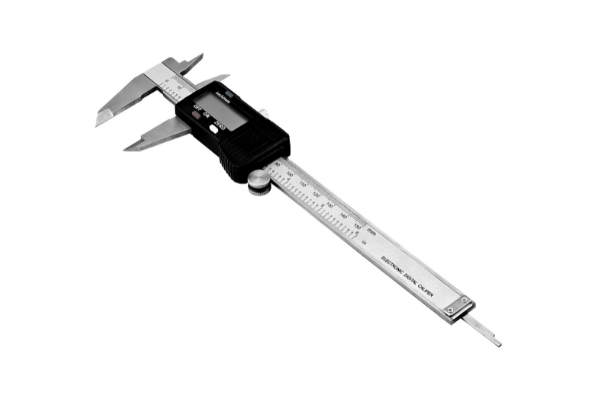4 Tips For Buying B-Deck
Whether it’s your first-time buying B-Deck or you are a pro, here are some tips that will come in handy!
What is B-Deck?
B Deck is the most commonly used structural metal decking. It’s 1.5” deep and 36” wide and it’s available as a non-composite roof deck or a composite floor deck. B Deck is a non-composite roof deck only, meaning it is a smooth metal decking.
What can I use B-Deck for?
The B-Deck is the most popular and widely used decking panel in the market today. The Type B-Deck or Wide Rib can be used for several applications such as flooring, siding, and roofing. Metroll most commonly sells and stocks this material in the standard galvanized finish.
Interlock Or Nestable?
Interlock and nestable are two different types of deck designs used in the manufacturing of pallets, which are flat structures used to support goods during transport and storage.
Interlocking deck boards have a unique design that allows them to fit together like puzzle pieces. The edges of each board have a protruding feature that fits into a groove on the adjacent board. This interlocking design provides additional stability and strength to the pallet, making it ideal for heavy loads and rough terrain.
Nestable deck boards, on the other hand, are designed to nest inside each other when stacked. The edges of each board are slightly angled, allowing them to fit together and reduce the overall height of the pallet stack. This design is especially useful for saving space during transportation and storage.
The main difference between interlock and nestable deck designs is that interlocking decks provide more stability and strength, while nestable decks are better for saving space. The choice between the two designs depends on the specific needs and requirements of the application.
Swedge or Non Swedge
B-Deck is a type of corrugated metal decking used in construction for flooring or roofing applications. The two main types of B-deck are swedge and non-swedge.
Swedge B-Deck
Has a modified end that is designed to interlock with the next sheet of decking. The swedge end has a tapered edge that allows it to fit inside the next sheet of decking, creating a tight and secure connection between the two sheets. This design provides added stability to the decking system and eliminates the need for additional fasteners, reducing installation time and cost.
Non-swedge B-Deck
On the other hand, has a straight edge on both ends of the sheet. This design requires the use of additional fasteners to secure each sheet of decking to the structure. Non-swedge B-deck is typically used in applications where the decking will be overlapped and fastened together with screws or bolts.
The main difference between swedge and non-swedge B-Deck?
Is the way the sheets are connected. Swedge B-deck has a modified end that interlocks with the next sheet, providing added stability and eliminating the need for additional fasteners. Non-swedge B-deck has a straight edge on both ends and requires additional fasteners to secure each sheet to the structure.
When choosing between swedge and non-swedge B-Deck?
It is important to consider the specific needs and requirements of the application. Swedge B-deck may be more suitable for applications where fast installation and added stability are required, while non-swedge B-deck may be more suitable for applications where decking will be overlapped and fastened together with screws or bolts.
Floor Embossed or Roof Smooth
B-deck is a type of corrugated metal decking used in construction for flooring or roofing applications. The two main types of B-deck are floor embossed and roof smooth.
Floor Embossed B-Deck
Has raised bumps or embossments on the top surface of the deck. This design provides better traction for foot traffic and equipment, making it ideal for flooring applications. The embossments also help to increase the structural integrity of the deck, making it better suited for heavy loads and high traffic areas.
Roof Smooth B-Deck
On the other hand, has a smooth surface on both the top and bottom of the deck. This design makes it ideal for roofing applications, where a smooth surface is needed for the attachment of roofing materials. The smooth surface also makes it easier to clean and maintain the roof.
The main difference between floor embossed and roof smooth B-Deck ?
Is the surface texture. Floor embossed B-deck has raised embossments on the top surface for better traction and structural integrity, while roof smooth B-deck has a smooth surface on both sides for easier attachment of roofing materials and maintenance.
When choosing between the two types of B-Deck
It is important to consider the specific needs and requirements of the application. For example, if the deck will be used for flooring in a high traffic area, floor embossed B-deck may be the better choice. If it will be used for roofing, roof smooth B-deck may be the more suitable option.
Know Your Gauges
We rollform B-Deck in 16, 18, 20 & 22 gauge. The net coverage is 36” and the rib height is 1.5”
About Metroll
Metroll is the premier metal in the heart of the Inland Empire. Metroll is commonly known for selling metal building components, but Metroll is also a supplier offering B-Deck, structural purlins, metal building kits, and much more. We have a variety of color options for metal panels, and we are the source for flat-sheets in Fontana. Metroll is your Inland empire source for exclusive profiles like 7.2 valuspan and punched purlins. Metroll services and delivers throughout Southern California. We regularly deliver to Los Angeles, San Diego, San Bernardino, and San Diego County. Metroll Fontana is a one-stop-shop for metal building components, panels, doors, fasteners, structural decking, B-Deck, purlins, trim components, and more!



